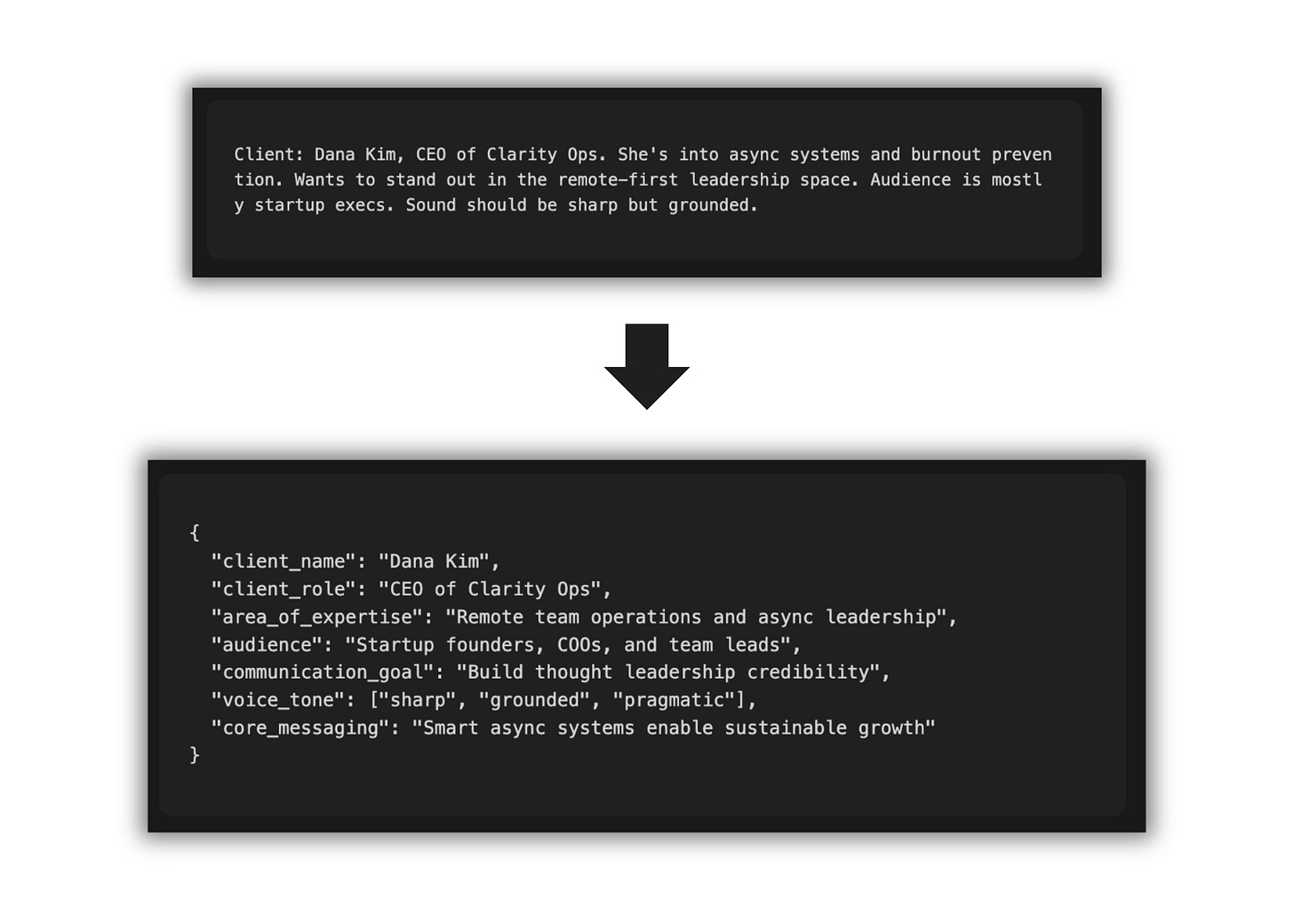This one change made my AI outputs 10x better
And it had nothing to do with better prompts
Most people are solving the wrong AI problem.
They're collecting prompts. Building complex templates. Adding XML tags and variable placeholders. I've seen prompt libraries that look like they need a computer science degree to understand.
But here's the thing: prompting isn't your problem. Your input architecture is.
Your prompts are fine. Your inputs aren’t.
I've written thousands of AI-generated assets for actual clients and my own stuff.
You know what I discovered? Whether you're brand new or crafting elite-level prompts, most people are still missing this one critical piece. They haven't separated their prompt logic from their context inputs.
And that's the real moat now.
Even my 50-line prompt template was still amateur hour
Look at this prompt template I used to use for newsletters:
You are an experienced newsletter creator with a proven track record of achieving 50%+ open rates and hundreds of thousands of subscribers. Your task is to create a new edition for a newsletter about the following niche:
<newsletter_niche>
{{NEWSLETTER_NICHE}}
</newsletter_niche>
The specific topic for this edition is:
<topic>
{{TOPIC}}
</topic>
Before we begin, please review the following notes for additional context:
<notes>
{{NOTES}}
</notes>
Start by analyzing the project knowledge, notes, and topic. Conduct your analysis inside <newsletter_analysis> tags:
1. Key themes from the newsletter niche:
[List at least 3 key themes]
2. Relevant information from the notes:
[Summarize at least 3 relevant points]
3. Potential angles for the newsletter:
[List at least 5 potential angles]
4. Target audience and their interests:
[Describe target audience demographics and at least 3 primary interests]
5. Potential reader pain points or desires related to the topic:
[List at least 3 pain points and 3 desires]
6. Content ideas based on the analysis:
[Brainstorm at least 5 specific content ideas]
7. Appropriate tone and style for the target audience:
[Describe the tone and style, with at least 3 specific characteristics]
8. Summary of findings:
[Provide a brief summary of your analysis, highlighting the most important insights]
Based on your analysis, complete the following tasks:
1. Create 7 highly engaging hook/title options
2. Create 7 subtitle options
3. Write an engaging outline for this newsletter
When creating hooks, titles, and subtitles, apply the following effective strategies:
1. Subject Line Importance:
- Subject lines determine whether an email gets opened.
- A strong subject line hints at a benefit and/or sparks curiosity.
2. Seven Effective Subject Line Styles:
a) Curiosity
b) Pain
c) Benefit
d) Story
e) Question
f) Contrarian
g) Proof
3. What to Avoid:
- Generic labels (e.g., "Newsletter #3")
- Boring yes/no questions
- Over-clever wording
4. Pro Tip: Use the word "THIS" for curiosity.
5. Remember: Readers skim—give them something that stops the scroll.
Present your work in the following format:
<hook_titles>
1. [Hook/Title 1]
2. [Hook/Title 2]
3. [Hook/Title 3]
4. [Hook/Title 4]
5. [Hook/Title 5]
6. [Hook/Title 6]
7. [Hook/Title 7]
</hook_titles>
<subtitles>
1. [Subtitle 1]
2. [Subtitle 2]
3. [Subtitle 3]
4. [Subtitle 4]
5. [Subtitle 5]
6. [Subtitle 6]
7. [Subtitle 7]
</subtitles>
<newsletter_outline>
I. [Main Section 1]
A. [Subsection 1]
B. [Subsection 2]
II. [Main Section 2]
A. [Subsection 1]
B. [Subsection 2]
III. [Main Section 3]
A. [Subsection 1]
B. [Subsection 2]
</newsletter_outline>
After presenting the outline, ask for my confirmation before writing the full newsletter. Ask if I would like any changes to the outline.
It’s a solid prompt.
But here's the catch:
I still have to manually swap in new context every damn time
I have to adjust instructions when switching between content types
I’m basically rebuilding the system for each use
That's not scaling. That's straight-up dependency.
The system that actually makes AI outputs not suck
Keep reading with a 7-day free trial
Subscribe to AI Disruptor to keep reading this post and get 7 days of free access to the full post archives.


